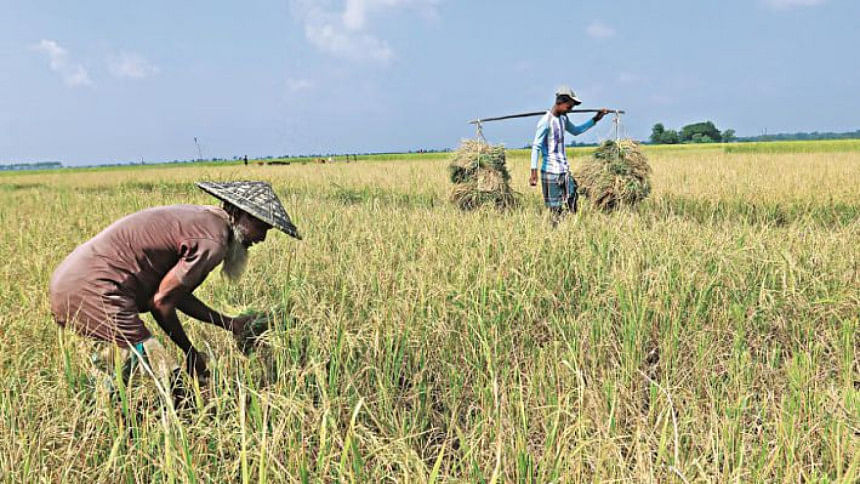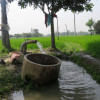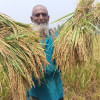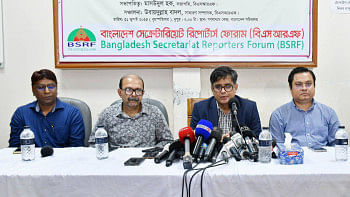Can Bangladesh feed its projected 22 crore population by 2050?

Rice is at the heart of Bangladesh's economy, culture, and food system. It is not just a staple food, it is the very foundation of national food security and rural livelihoods. With more than 40 million tonnes produced annually and consumed by nearly every household, rice is woven into the social and economic fabric of the nation. Over the past five decades, Bangladesh has made remarkable progress in ensuring rice self-sufficiency. From 9.77 million metric tonnes in 1971-72, production surged to 40.6 million metric tonnes in 2022-23 due to advances in varietal development, irrigation, and farm-level extension.
But as the country looks ahead to 2050, this success story faces serious threats. Climate change, a shrinking labour force, land degradation, and rising demand from a projected population of 22 crore—all point towards a future where business-as-usual will no longer suffice.
To meet these challenges, the Bangladesh Rice Research Institute (BRRI) has developed a bold and forward-looking Perspective Plan 2050. This strategic vision lays out a comprehensive approach to secure Bangladesh's rice sector for the next generation. It recognises that sustainability, resilience, and innovation must drive the future of rice production—not just yield and acreage. The core message is clear: if Bangladesh is to continue feeding its people and supporting its economy, it must radically transform how it produces rice, starting now.
One of the most immediate and pressing threats to rice production is climate change. BRRI's Perspective Plan outlines in stark terms how rising temperatures, unpredictable rainfall, and extreme weather events will increasingly disrupt the country's agricultural calendar. Climate models project that by 2050, Bangladesh could experience between 120 and 150 days each year with maximum temperatures exceeding 35 degrees Celsius. Similarly, the number of tropical nights—when the minimum temperature stays above 26 degrees Celsius—may rise to more than 200 nights annually. These conditions are highly detrimental to rice cultivation, particularly during critical growth stages. High daytime temperatures during panicle initiation and flowering can cause spikelet sterility, leading to yield losses of up to 50 percent. Night-time heat, on the other hand, interferes with the plant's ability to transfer energy, increasing respiration and reducing grain filling. According to studies cited in BRRI's plan, a single-degree Celsius increase in night temperature can cut rice yields by seven to 10 percent.
These alarming projections underscore the need for climate-adaptive strategies. BRRI's plan proposes a range of interventions, including the development of heat, drought, and salinity-tolerant rice varieties; the introduction of early warning systems and crop advisory tools; and the improvement of water management practices to help farmers adapt to erratic rainfall and rising temperatures. Such adaptation is not optional—it is essential for preserving national food security in the face of environmental uncertainty.
But climate change is not the only factor that will shape the future of rice in Bangladesh. Demographic and economic trends are also reshaping the agricultural workforce. As of 2024, approximately 35 percent of the country's labour force remains engaged in agriculture. However, this share is projected to fall dramatically to around 8 percent by 2050, as more young people migrate to cities and take up jobs in manufacturing, services, or abroad. This demographic shift poses a significant risk to traditional, labour-intensive farming systems. With fewer hands available in the field, productivity may decline unless urgent steps are taken to mechanise and modernise rice production.
To address this challenge, the BRRI Perspective Plan sets an ambitious target: 80 percent mechanisation of rice cultivation by 2050. This transformation would cover all major operations—from land preparation and seedling transplanting to harvesting and drying. Mechanised farming can dramatically reduce labour requirements, cut production costs, and improve timeliness—all of which are essential to remain competitive and sustainable. But mechanisation must be inclusive and accessible. For that, policies must support smallholder farmers in acquiring or accessing machinery, either through credit schemes, farmer cooperatives, or rural service providers. There must also be investment in training programmes to build the skills of machine operators, technicians, and youth entrepreneurs in rural areas. Mechanisation is not just about technology—it is about creating a new ecosystem for modern, efficient agriculture.
Another pillar of the Perspective Plan 2050 is genetic innovation. BRRI's plan emphasises the need to accelerate breeding programmes through speed breeding, genomic selection, and digital phenotyping. These advanced tools can shorten the breeding cycle and deliver high-yielding, resilient varieties tailored to specific ecologies. BRRI has already released 115 modern varieties, including 27 that are nutritionally enhanced with zinc, iron, and antioxidants. These varieties offer not only yield advantages but also public health benefits, helping to combat micronutrient deficiencies that affect millions of Bangladeshis. In a future shaped by climate extremes and dietary transitions, nutritional security will be just as important as caloric security.
In addition to innovation in genetics and machinery, the Perspective Plan identifies opportunities to expand rice production by improving cropping intensity and utilising underused agroecological zones. Large tracts of land in coastal, char, and fallow areas remain underutilised. BRRI proposes that by adjusting cropping patterns—introducing short-duration Aus rice between major seasons or integrating rice with pulses and oilseeds—Bangladesh could harvest an additional four million tonnes of rice annually. This increase would not require more land, just smarter use of existing resources.
Post-harvest management is also a key focus of the plan. Significant quantities of rice are lost each year due to inefficient harvesting, drying, and storage practices. These losses represent not just wasted food but lost income for farmers and higher prices for consumers. By investing in post-harvest mechanisation, improved milling technology, and cold storage facilities, Bangladesh can reduce losses, improve grain quality, and strengthen the entire value chain. Moreover, developing branded, value-added rice products—such as aromatic or fortified rice—could open up new domestic and export markets, improving farmer profitability and consumer nutrition alike.
A major strength of the BRRI Perspective Plan is its recognition that resilience must be embedded throughout the rice system. The plan anticipates not only climate variability but also shocks such as cyclones, floods, market disruptions, and pandemics like Covid. Building resilience requires strong seed systems, farmer safety nets, crop insurance, and decentralised supply chains. It also means developing institutions that can respond rapidly to emergencies, communicate effectively with farmers, and coordinate action across different sectors.
None of this will be possible without cross-sector collaboration. The Ministry of Agriculture, the Ministry of Planning, and the Ministry of Finance must align their strategies and investments with BRRI's vision. Development partners, NGOs, and private firms must be brought in to scale technologies, deliver services, and invest in rural infrastructure. At the heart of it all, farmers—especially smallholders, women, and youth—must be engaged not just as beneficiaries but as co-creators of change. The road to 2050 is long, but the time to act is now.
Mohammad Kamruzzaman Milon is senior scientist and agri-climate expert at the Bangladesh Rice Research Institute (BRRI). He can be reached at [email protected].
Views expressed in this article are the author's own.
Follow The Daily Star Opinion on Facebook for the latest opinions, commentaries and analyses by experts and professionals. To contribute your article or letter to The Daily Star Opinion, see our guidelines for submission.

 For all latest news, follow The Daily Star's Google News channel.
For all latest news, follow The Daily Star's Google News channel. 










Comments